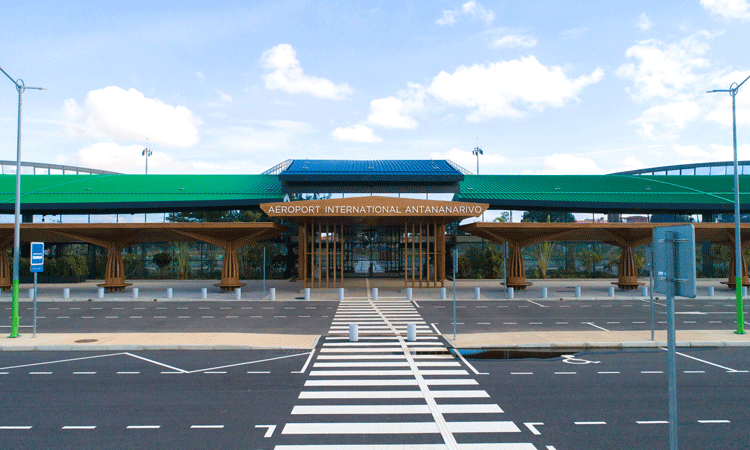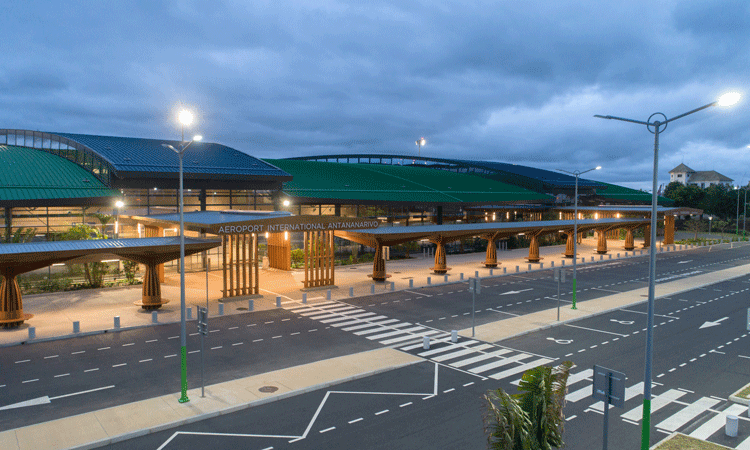Tatamo Rakotozafy, Head of Aviation Activities at Ravinala Airports Madagascar spoke to International Airport Review about the emerging market growth they are seeing from Eastern Europe, exciting new cargo terminal plans and their challenges.
c: Ravinala Airports
How is business going and how has your recovery been?
We are very happy and satisfied with the current recovery. We only opened the borders in 2022, much later than other countries. But what we have observed is that traffic is rebounding very well, especially for the international and regional segments, which is our focus currently. We’ve also observed that our source markets have been very resilient, mainly from France and Europe. Currently, our main operators and airlines have now recovered more than 100% of their traffic levels in 2019.
Are there any travel trends that you’re observing with your passengers that you are really paying attention to?
We are continuing to observe our source markets, which are France and Germany mainly, but now we are also observing emerging markets from Eastern Europe. This was not a focus for us in 2019, but is so now, especially with the addition of our leisure destination, which is Nosy Be. So, this year we have launched two routes from Eastern Europe, from the Czech Republic and from Poland. We are very proud of that because it wasn’t a source market but now it’s a growing one. We are seeing the effort we put in with promotion, with the partnership with our tourism board, paying off.
What are your challenges for the year ahead?
The main challenge for an island like Madagascar is first the bilateral agreements. We are located in the African region, but not very connected to these African regions, nor to long-haul destinations. As such, when you want to start new routes, the bilateral agreements are never put in place. Now it’s a challenge that we are trying to resolve with our government and civil aviation. We’ve seen very high growth of brands coming to Madagascar in the last few years and this is still a challenge because the traffic is growing very fast in some regions like Nosy Be, where we are operating.


c: Ravinala Airports
What exciting developments at your airports are you most looking forward to?
In the coming years we are looking to grow in Europe as it’s a very big market for us, but there is not enough cover for us so far. We also face some issues with our national carrier, so we have to see how we can help them and also how to secure them and make them grow, especially as I think there is limited growth with our international carrier.
Cargo development is also a key area of focus for us, because we are going to build a new cargo terminal in the coming years. Madagascar is an island which has a lot of resources. We have mining products, textile, seafoods, essentials oils, vanilla and spices. It’s got huge potential, but we don’t have the infrastructure for huge air cargo exports. During the pandemic, it grew a lot and we are now more than confident that it’s a market that we can, and need to fill. There’s presently no cargo hub in Madagascar, so there is a good opportunity to grow here as well.
What are your route development ambitions?
We’re only two people doing this job in the country, and we are managing the two biggest airports as well, so it’s a big challenge. I think that it’s a culture challenge, rather than only an airport challenge. My vision is to better connect our airports to other regions, to connect Malagasy people and connect them to the rest of the world. We also have a vision to be an airport reference in airport development in the Indian Ocean region by 2025.


c: Ravinala Airports
How are you ensuring sustainable growth?
Sustainable growth is based on partnerships and strong partnerships with islands, but also with the tourism board, with civil aviation, with the government authorities, and it’s a model that has been proved in efficiency in recent years with us. We have seen that a common strategy for all the stakeholders involved in the aviation industry works very well, and certainly more so than everyone having their own separate strategy. We have the same objectives at the end of the day. Partnerships are the best way to improve connectivity in Madagascar.
Congratulations on winning the Rising Star category at the 2023 Routes Awards! What’s on your personal to-do list for the next year?
First, is to achieve the objective to be an airport reference in service development in the Indian Ocean region. Second, is to have those top tourists that we acutely want to get at present. So, connectivity to Europe and Middle Eastern carriers and we also want to connect better with Africa. These are the top priorities to achieve in 2024 and in the coming years.

 Graduated in International Business and Finances, Tatamo Rakotozafy joined Ravinala Airports, a subsidiary of ADP Group in 2019 as Route Development Manager. Her passion for aviation developed very quickly as Tatamo soon found herself working on both airport connectivity, forecasting but also tourism development of the destination. Tatamo’s expertise on commercial development and airport connectivity is a first in Madagascar and allows her to actively support the growth of the aviation industry in her country.
Graduated in International Business and Finances, Tatamo Rakotozafy joined Ravinala Airports, a subsidiary of ADP Group in 2019 as Route Development Manager. Her passion for aviation developed very quickly as Tatamo soon found herself working on both airport connectivity, forecasting but also tourism development of the destination. Tatamo’s expertise on commercial development and airport connectivity is a first in Madagascar and allows her to actively support the growth of the aviation industry in her country.





















